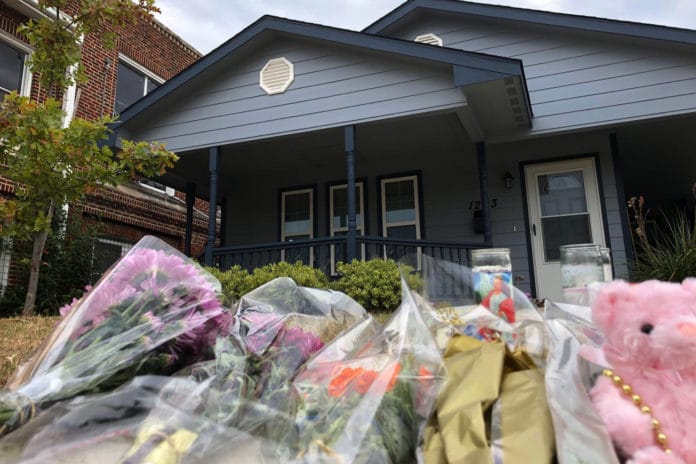Fort Worth made national headlines Oct. 20 when The New York Times published a story about race relations in the city headlined “Fort Worth Police Have More Violence to Answer For, Residents Say.” The backdrop was the Oct. 12 death of Atatiana Jefferson, a 28-year-old black woman shot in her own home by a white police officer, 34-year-old Aaron Dean.
Dean has resigned from the police force and has been charged with murder.
Here’s the description of our city from the Times:
“Fort Worth has a storied history as a Western outpost – it lives up to its Cowtown nickname with twice-daily cattle drives in the historic district – but today, the nation’s 13th largest city is in some ways two different places, divided along racial and economic lines. It is home to the Walmart heiress Alice Walton, the wealthiest person in Texas, but neighborhoods like Ms. Jefferson’s are dotted with abandoned homes.
“Most of the police force, about 65 percent, is white – as are the mayor, the city manager, a majority of the City Council and now the police chief, after the department’s first black chief was fired earlier this year. Black and Hispanic residents, who together make up a majority in the city, complain that they often feel ignored by city leadership, and unfairly targeted by the police. Black residents on their own make up about 18 percent of the population, but they accounted for 40 percent of arrests in 2017.”
The story detailed several incidents involving black residents and police, including one that generated national news in December 2016 when 49-year-old Jackie Craig and two teenage daughters were arrested by a white police officer after Craig called 911 to complain about a white neighbor manhandling her 8-year-old son.
Both Mayor Betsy Price and interim police chief Ed Kraus reacted quickly to the Jefferson shooting, declaring it inexcusable. In an emotional news conference, Kraus said his department has worked hard to earn the trust of minority communities and expressed heartfelt regret that the actions of one officer had undermined that effort.
Price told the Times that she, too, has reached out to minorities.
“I am in the minority community more than anywhere else,” she said
And yet there remains a clear perception, from The New York Times nationally all the way to the neighborhood where Atatiana Jefferson lost her life at the hands of a man whose job was to protect her, that we have a problem in Fort Worth.
We are not alone in facing such problems, the Times pointed out:
“Five years after a police shooting in Ferguson, Mo., stoked a national debate over race and policing, Fort Worth is far from the only community where residents complain that the conversation in their city never really went anywhere.”
But the complaints here are the ones we can no longer ignore.
At Price’s direction and under the supervision of City Manager David Cooke, the city is putting together a panel of national experts to evaluate the police department and its practices. Unless we see evidence to the contrary, we should take officials at their word that they will work to correct any deficiencies that exist.
But while City Hall and the police department address these issues and search for solutions, there is a larger question for the business community and those in civic life. What are the rest of us doing about the city’s racial divide?
The area’s top businesses have been led almost exclusively by white men for decades upon decades. And their subordinates have been white men as well.
It doesn’t have to be this way. Business leaders can change the composition of their executive teams in a relatively short time. They simply have to have the will to do it.
During the majority of the time that I was publisher of the Fort Worth Star-Telegram I worked for a large Fortune 500 media company that had only a few rules. One was that those who ran the businesses should do the right thing before someone told us to fix a problem. It was also a company that believed in diversity and had the resources to back up its beliefs.
In a short time at the Star-Telegram – less than two years – I was able to hire the first two women vice presidents of the company and later promote a black person to a vice president’s post. Prior to that, the executive team was made up entirely of white males.
We accomplished this by making diversity in the executive ranks a priority and by working hard to seek out highly qualified women and minority candidates. Those candidates exist, but they won’t just walk through the front door. Businesses have to proactively seek them out.
Beyond that, when you achieve diversity and inclusion, it’s essential to remain committed to it. Within two years after I left the Star-Telegram, the executive team once again consisted of all white males.
If we are to change the belief – let’s face it, the reality – that a racial divide exists in this city, the effort must extend beyond city government and the police force; business and civic leaders also need to do the right thing. When the leadership at influential businesses begins to change, the city will change.
Richard Connor is president and publisher of the Fort Worth Business Press. Contact him at rconnor@bizpress.net








